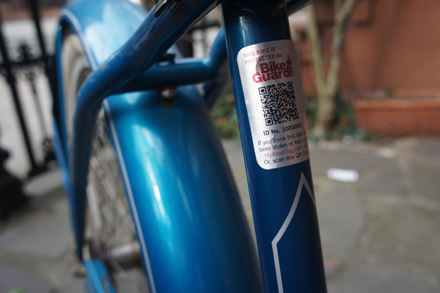Top 4 ways to protect your gadgets: Phone deactivation service joins essential anti-theft measures


A sweater and sushi. Or rather, a Tablet and an iPhone.
July 11, 2012 — This week, AT&T became the third major cell service provider in the United States to allow users to block services for lost and stolen phones. As a result of such measures, smartphone theft should happen less in the years to come. As it is now, though, two in five smartphone users have had a phone lost, stolen, or damaged. Like smartphones, tablets and laptops are also at risk of theft, but no matter what your gadget, effective measures can be taken to prevent your devices from being stolen. While the service providers’ new programs are good steps, most people would still prefer not to have their gadgets stolen in the first place. Below, we’ve provided four proven techniques to help keep your gadgets from getting stolen.

Books, or a laptop?
1. Disguise your gadgets as other stuff
If potential thieves don’t know that you have any gadgets, then they won’t make an attempt to take them. As a result, a number of companies have begun to sell disguises for smartphones, tablets, and laptops. After all, what thief wants to steal a neatly folded shirt-sweater combo or a tray of sushi? Even if a thief suspects that the old book in your bag might actually be a laptop, he’ll probably go for a sure bet over a hunch. A disguise like one of these can also be helpful if you often carelessly leave your gadgets in public places.
2. Anti-theft software
No matter what smartphone or tablet operating system you use, rest assured that there are a number of anti-theft apps available for it. Anti-theft apps can do any number of things to help deter theft and recover stolen items. For instance, one Android anti-theft app, Cerberus, allows the user to control the stolen device remotely via both the app’s website and text messages. The remote control function allows the user to locate and track the device, enable a loud alarm, lock the device, and perform a number of other functions. Apps with similar functions also exist for Apple’s iOS, Nokia’s Symbian, and the BlackBerry OS.


Two anti-theft apps
Laptops also have anti-theft software available. Prey, a program for both computers and smartphones, has almost identical functions to anti-theft apps made exclusively for smartphones. But in addition to those functions, the program can also take a picture of anyone using the computer by means of a webcam and wipe any personal information from the hard drive. It can also display a custom message to thieves, which, if nothing else, lets them know that they’re being chased.

An asset tag protects a bike
3. Asset tags
When you have a larger number of gadgets, asset tags are a valuable way to keep track of your collection. Most asset tag vendors allow for customization in size, color, and text. Asset tags make cataloging your gadgets easy, since each has a unique number, barcode, or both, meaning you’ll always know who has your gadgets. Online retailers like MyAssetTag often sell unique custom tags in bulk for discounted prices.
Asset labels can even act as a deterrent to possible thieves. Just knowing that someone has accounted for an item’s whereabouts can be enough to ward off a potential thief. Since asset tags usually contain strong adhesives, they are quite difficult to remove, creating another obstacle for a thief hoping to claim ownership of assets.
4. Keep an eye on your stuff
If you’re only keeping track of your own personal gadgets, though, nothing beats keeping a watchful eye over your things. Even if you don’t have any gadgets, being aware of your surroundings can keep you and your possessions safe from harm. Pickpockets have much easier access to back pockets, so in case you’re not interested in electric pants, keep your phone and wallet in your front pocket at all times. Similarly, it is much easier to steal a laptop or tablet from a backpack than from a messenger bag or satchel. This is because the owner can’t see a potential thief coming up from behind, and because backpacks can more easily be cut open at the bottom than can lower-hanging bags. Or if you are wearing a backpack on public transit, it’s safest to wear your pack on your front rather than on your back. A sense of awareness can make all the difference.
Nowadays, everyone seems to have smartphones, tablets, and laptops, but the convenience and portability of these devices make them particularly easy targets for thieves. Knowing how to protect gadgets from theft is an important skill that any smart and tech-savvy consumer should learn. If your smartphone ends up stolen anyway, be sure to take advantage of the cancellation services offered by most cell phone service providers.
– T. Caruso










